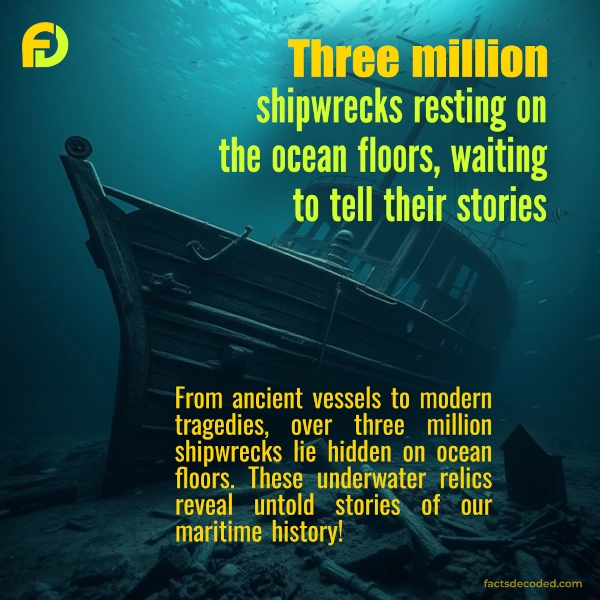
A Maritime Time Capsule
The world’s oceans are a treasure trove of shipwrecks, with over three million vessels estimated to rest on their floors. These shipwrecks range from ancient trade ships to modern naval and commercial disasters, each holding secrets of the past. They offer unparalleled insights into historical navigation, trade routes, and even warfare. Beyond their historical importance, shipwrecks are havens for marine ecosystems, creating artificial reefs that sustain diverse aquatic life.
How Did So Many Ships End Up Beneath the Waves?
Shipwrecks occur due to various causes, including storms, warfare, human error, and even piracy. Throughout history, seafaring was a perilous venture, and many vessels met their fate navigating treacherous waters. The Titanic and Lusitania are among the most famous modern examples, while ancient wrecks like those from the Roman Empire highlight the dangers of early maritime trade.
Modern Explorations
Advancements in underwater technology have allowed researchers and explorers to locate and study these submerged vessels. Using submersibles, sonar mapping, and even robotic explorers, archaeologists continue uncovering treasures and piecing together stories from the ocean’s depths. However, many shipwrecks remain untouched due to their remote locations or depth.
Fun Facts About Shipwrecks
- The RMS Titanic, lying 12,500 feet below the North Atlantic, was discovered in 1985, decades after its tragic sinking in 1912.
- Some shipwrecks, like the Vasa in Sweden, are so well-preserved that entire ships can be reconstructed.
- The “Shipwreck Coast” in Australia’s Victoria region is named for its perilous conditions that caused over 600 shipwrecks.
Curious About More Maritime Mysteries?
Dive into our “Ocean Wonders” category for fascinating stories about maritime history, underwater discoveries, and the secrets of the deep. Don’t forget to share this post with your fellow history and ocean enthusiasts!

We choose not to clutter your experience with ads. If you’d like to support us, consider showing some love by liking this post on X (Twitter), Instagram or Facebook!
Share this Post, Spread the Knowledge!

Nice. Interesting.